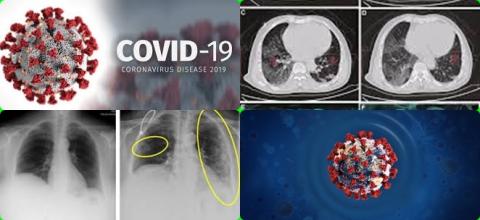
Objectives:
The goals of this meta-analysis is to evaluate the efficacy and safety of current option of therapies for severe acute respiratory syndrome (SARS), Middle Eastern respiratory syndrome (MERS) besides COVID-19, in an attempt to identify promising therapy for severe acute respiratory syndrome coronavirus 2 (SARS-CoV-2) infected patients.
Study design:
This review article included 34 retrospective studies involving a total of 4,121 patients with COVID-19.
Results and conclusions:
The investigators found most patients with COVID-19 presented bilateral lung involvement [73.8%, 95% CI = 65.9% to 81.1%] or multilobar involvement [67.3%, 95% CI = 54.8% to 78.7%] and just little patients showed normal CT findings [8.4%].
The investigators found that the most common changes in lesion density were ground-glass opacities [68.1%, 95% CI = 56.9% to 78.2%].
Other changes in density included air bronchogram sign [44.7%], crazy-paving pattern [35.6%] and consolidation [32.0%].
The investigators found patchy [40.3%], spider web sign [39.5%], cord-like [36.8%] and nodular [20.5%] were common lesion shapes in patients with COVID-19.
Pleural thickening [27.1%] was found in some patients. Lymphadenopathy [5.4%] and pleural effusion [5.3%] were rare.
The investigators concluded the lung lesions of patients with COVID-19 are mostly bilateral lungs or multilobar. The most common chest CT findings are patchy and ground-glass opacities.
Original title:
CT imaging features of 4121 patients with COVID-19: A meta-analysis by Zhu J, Zhong Z, […], Zhang J.
Link:
https://www.ncbi.nlm.nih.gov/pubmed/32314805
Additional information of El Mondo:
Find more information/studies on coronavirus right here.